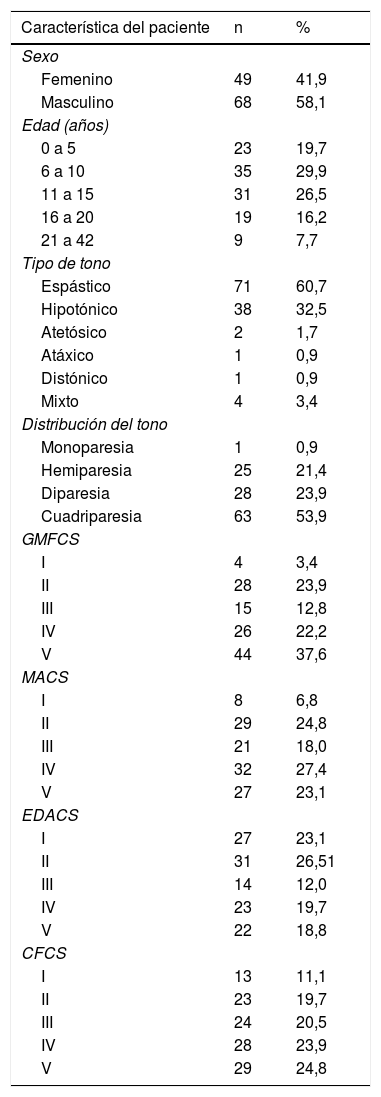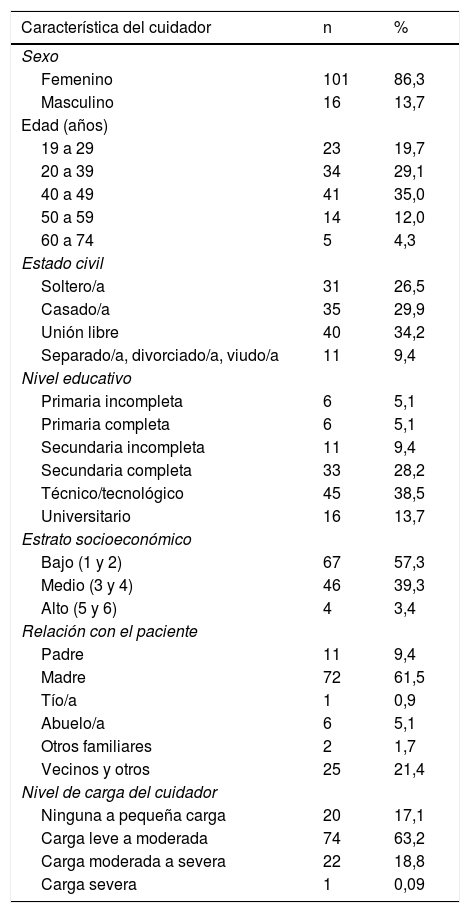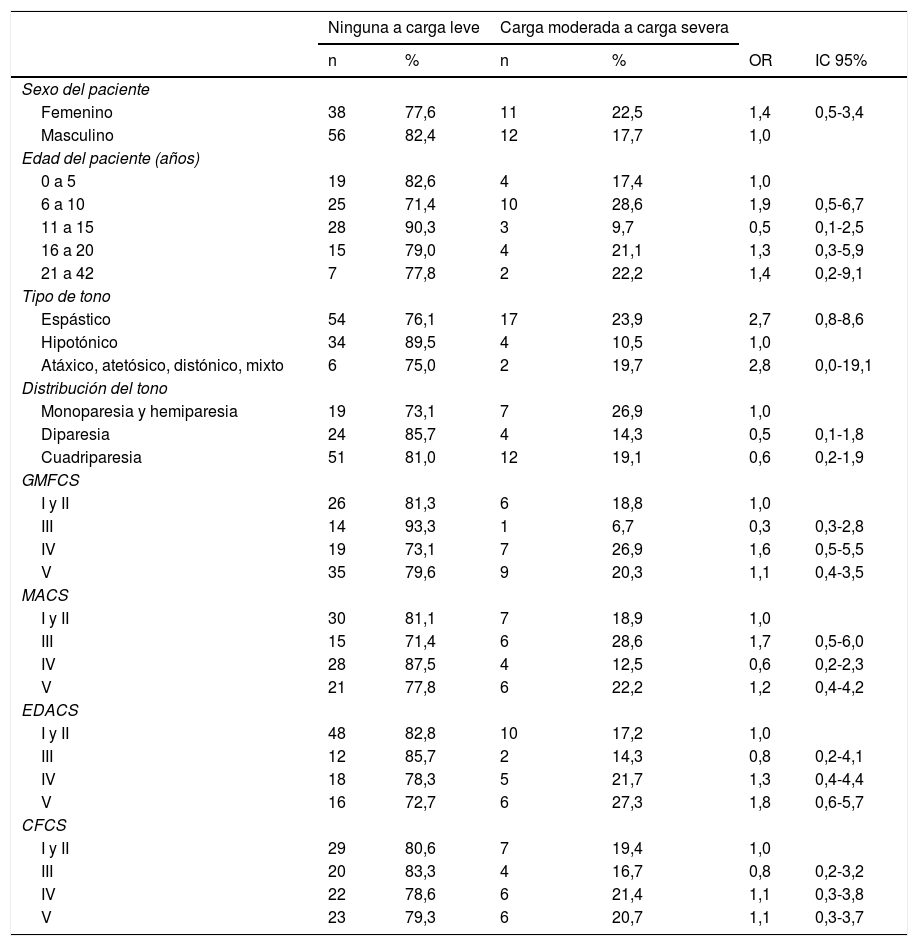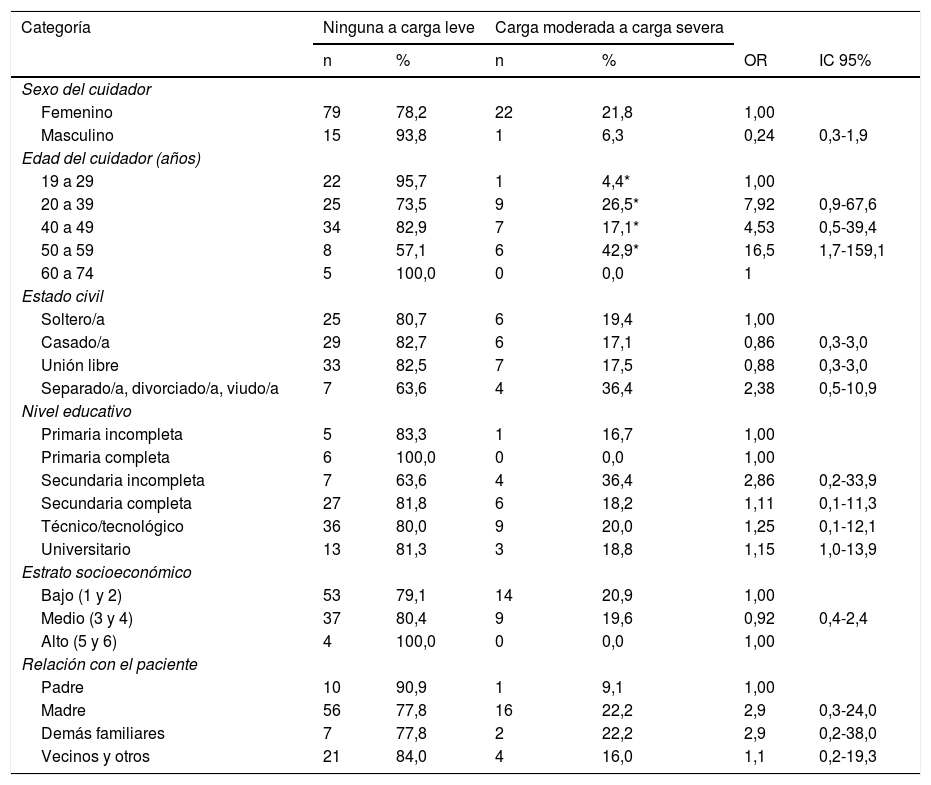Estudio de prevalencia que describe la percepción de la carga de los cuidadores de los pacientes con parálisis cerebral que asistieron a un centro de rehabilitación neurológica.
Material y métodosEsta investigación se realizó en un centro de neurorrehabilitación de Cali, Colombia, en la que participaron 117 cuidadores de pacientes con parálisis cerebral. Se recogió información sobre la percepción de carga del cuidador, sus características sociodemográficas y las clínicas de los pacientes, entre los meses de junio a agosto de 2017. La información sobre la carga del cuidador fue obtenida con el cuestionario de carga de Zarit. Esta variable se categorizó en 2 grupos (carga leve a moderada y carga moderada a severa) para el análisis bivariado.
ResultadosLa mayoría de los cuidadores presentaron carga leve a moderada (74%); se observó un incremento de la probabilidad de carga del cuidador moderada a severa en cuidadores de mujeres (OR 1,35; p>0,05), de niños de 6 a 10 años (OR 1,9; p>0,05), y con mayor compromiso en la función motora gruesa, clasificados en nivel iv y v según GMFCS (OR 1,60 y 1,11, respectivamente; p>0,05). También hubo incremento de carga en cuidadores con edades entre 20 a 39 años (OR 7,92; p<0,05), que se encuentran separados, divorciados o viudos (OR 2,38; p>0,05), y con formación básica secundaria incompleta (OR 2,86; p>0,05).
ConclusionesEste estudio evidencia que la percepción de carga del cuidador varía principalmente según el sexo, la edad y la afectación del paciente con parálisis cerebral, así como la edad, el estado civil y el nivel educativo del cuidador.
Prevalence study describing the perception of burden among the caregivers of patients with cerebral palsy attending a neurological rehabilitation centre.
Material and methodsThis study was carried out in a neuro-rehabilitation centre in Cali, Colombia, with the participation of 117 caregivers of cerebral palsy patients. Information was gathered on caregiver burden, caregivers’ sociodemographic characteristics and the patients’ clinics between June and August 2017. Information on caregiver burden was collected with the Zarit Burden Interview. Burden was classified into 2 groups (light to moderate burden and moderate to severe burden) for the bivariate analysis.
ResultsMost caregivers experienced light to moderate burden (74%); an increase in the probability of burden among caregivers with moderate to severe burden was observed in the caregivers of women (OR 1.35; P>.05), children aged 6 to 10 years (OR 1.9; P>.05), and those with greater gross motor function involvement, classified in level iv and v according to the GMFCS (OR 1.60 and 1.11, respectively; P>.05). Burden was also higher in caregivers who were separated, divorced or widowed (OR 2.38; P>.05), and those with incomplete basic secondary education (OR 2.86; P>.05).
ConclusionsThis study suggests that perceived burden among caregivers varies mainly according to the age, sex, and disability of patients with cerebral palsy, as well as the age, marital status and educational level of the caregiver.










